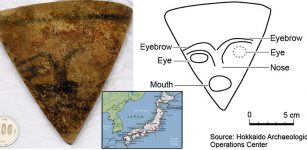First Roman Military Amphitheater Unearthed Near Megiddo
Jan Bartek - AncientPages.com - The first known Roman military amphitheater has been discovered by archaeologists excavating at the base of the Legio VI Ferrata Roman Legion near Megiddo (known as Legio) in the Southern Levant.
It's a significant archaeological discovery because it gives a deeper insight into the importance of Roman military amphitheaters.
While remains of over 230 Roman civilian amphitheaters have been found throughout what was the territory of the Roman Empire, fewer military amphitheaters have been excavated, and most of those are in the western regions of the empire.
The bowl-like depression of the amphitheater at Legio. Credit: Jezreeel Valley Regional Project
“Military amphitheaters are connected to the military and not to a city. We know of examples of military amphitheaters in the western regions of the Roman Empire such is in Germany, France and Spain, but they are not known in the eastern half of the Empire. This structure is a few hundred meters from the military base.
We know of examples of military amphitheaters in the western regions of the Roman Empire such is in Germany, France and Spain, but they are not known in the eastern half of the Empire. This structure is a few hundred meters from the military base, Dr. Yotam Tepper, Israel Antiquities Authority consultant explained.
Several excavations teams have worked at the site over the years, and the discoveries reveal that the "area had a vibrant community, and the Roman Legion’s military camp shared the area with a Jewish village as well as with a Roman-Byzantine city," the Jerusalem Post reports.
After having gone through almost 250 square meters in archaeological sections scientists unearthed parts of the flattened arena, remains of ramps made from layers of dirt and rock that would have supported the cavea, and two sections of the outside supporting wall. They have just begun to uncover the stone wall of the entrance gate to the amphitheater. In addition, they found remains of what appeared to have been stone seats, said Tepper, who also uncovered parts of stone seats.
According to Tepper, the Roman military amphitheater would have been 50-70 meters (164-230 feet) long and the seating area some eight to nine meters high.
Matthew J. Adams, director of the W.F. Albright Institute of Archaeological Research in Jerusalem told the Jerusalem Post that "compared to the elaborate amphitheaters used for the civilian population, military amphitheaters were a more rustic affair, he said, with wooden seating and a less lavish setting."
“The main question we were looking to answer was if the bowl shape we were seeing on the ground was actually an amphitheater, and basically we have proved it,” said Adams. “We have determined the shape is artificially made... it looks like they flattened the entire area down to a natural clay source that was already there. Just today we are starting to see monumental stones from the entrance into the amphitheater gate, which is nice and promising because it is clear that at least the foundation of the wall is there.”
"Just today we are starting to see monumental stones from the entrance into the amphitheater gate, which is nice and promising because it is clear that at least the foundation of the wall is there.”
"Located near the Roman military camp, the amphitheater would have been built by the manual labor of the soldiers with picks and hoes, said Adams. It was used as both a training ground for soldiers as well as for “entertainment” for the troops such as gladiator battles and animal fights.
“We tend to think of an army in the modern sense but soldiers of the Roman Legion played a lot of roles including local police, builders and engineers,” he said, noting the Sixth Roman Legion from Megiddo helped build part of the Caesarea aqueduct.Israel boasts three Roman amphitheaters, in Caesarea, Bet She’an and Beit Guvrin.
A gold coin of Roman Emperor Diocletian from the Legion excavations. Credit: Jezreeel Valley Regional Project
While some scholars maintain that the amphitheater in Beit Guvrin was also used for military purposes, Tepper and Adams believe that its location within the city indicates that it was more than likely mainly used for the population of the city.
“Located just outside the military camp, our amphitheater is very much connected to the legion,” said Adams. “It gives us another dimension to the experience of the soldier outside the formality of the base itself. With every new find, we see different parts of their lives.
See also: More Archaeology News
In the excavation of the headquarters, we can imagine the generals planning and the troops gathering. In the barracks, we see their cooking pots where they prepared their meals. And now the amphitheater is the place where we know they were spending a lot of time as a legion training and also doing leisure activities.”
Written by Jan Bartek - AncientPages.com Staff Writer






















